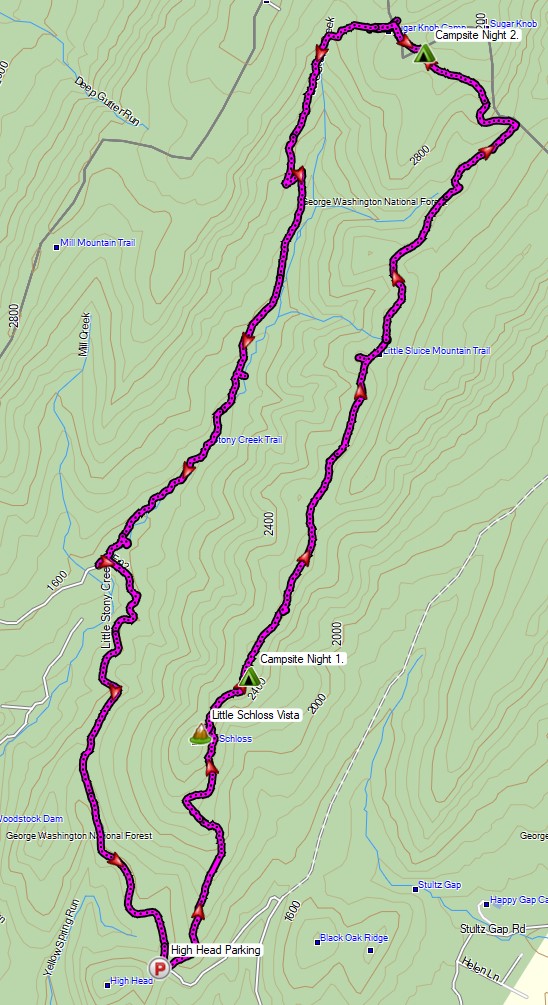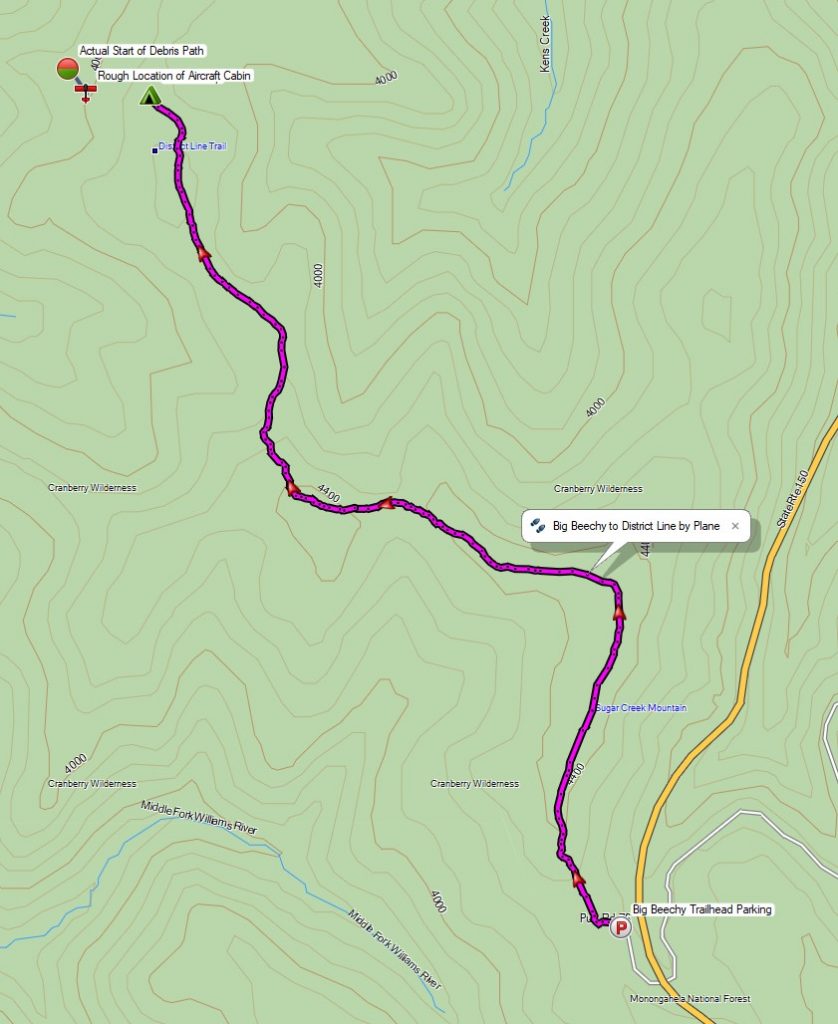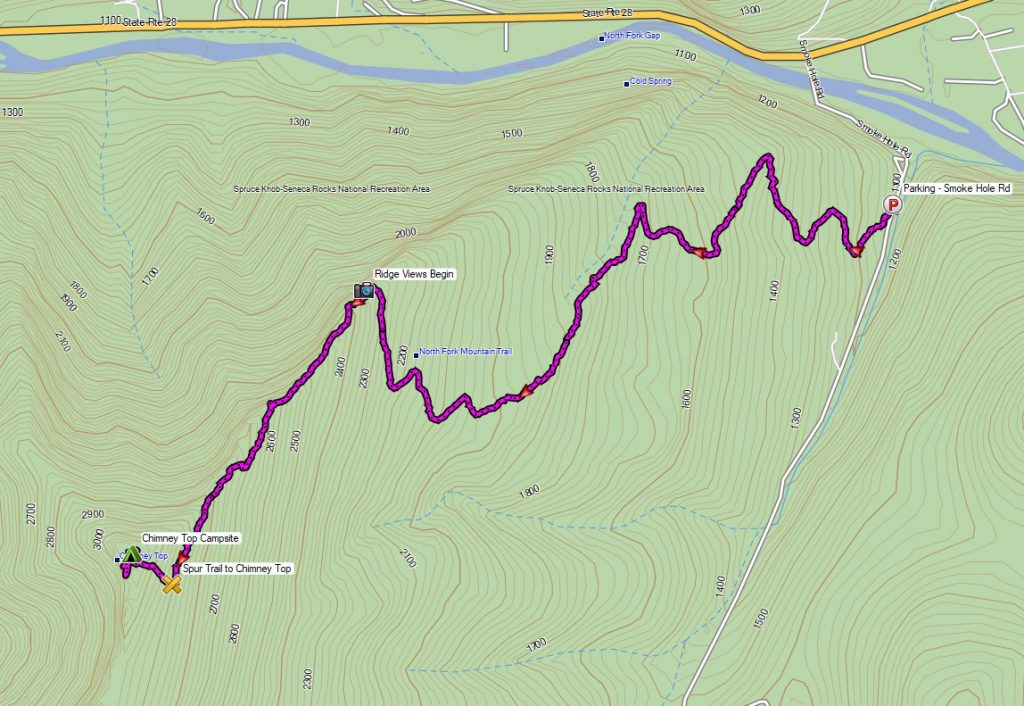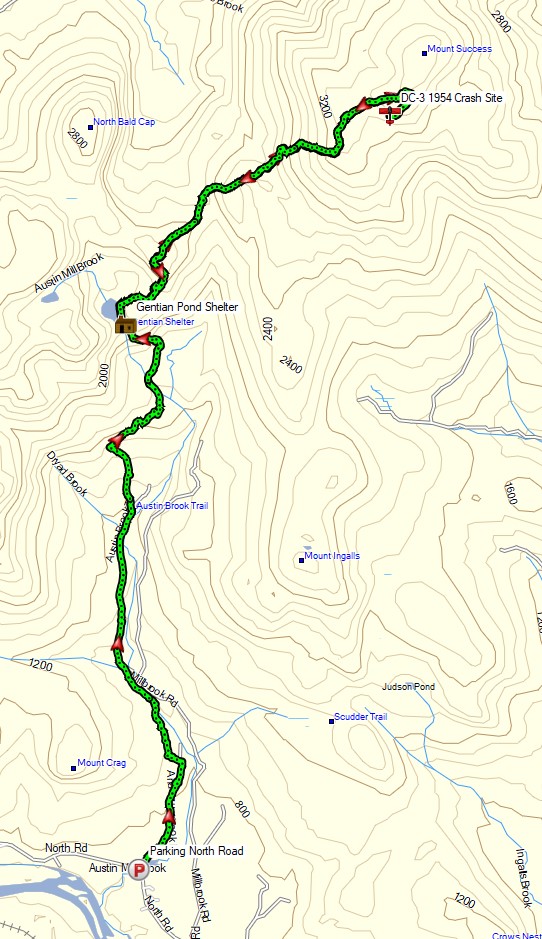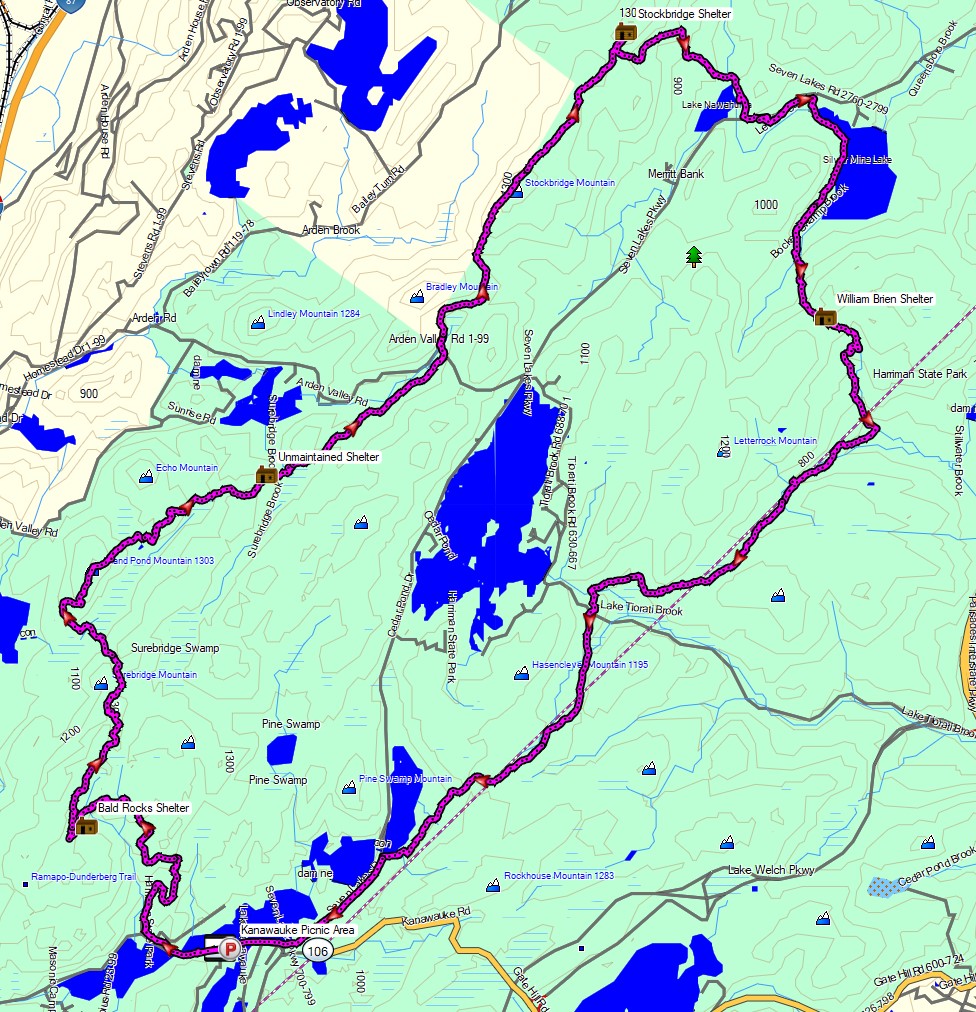3 days of Hammock Camping & Solo Ultralight Backpacking in Virginia’s George Washington National Forest.
FTC Disclosure: This post contains affiliate links, which means I may receive a commission for purchases made through some of my links.
For this backpacking trip, I headed down to the border of Virginia and West Virginia for some early spring camping to get a dose of some warmer weather, babbling brooks, and mountain views.
With the milder temps and decent forecast, I was able to get my base weight down to 7.75 pounds, a welcome change after hauling some pretty heavy loads my previous few backpacking trips.
For sleep and shelter, I went with my minimalist hammock camping setup consisting of a 10 oz hammock, 5 oz tarp, and a pair 40° down quilts. The 14 mile Little Schloss Loop has a decent amount of unofficial, but preestablished campsites with some nice open areas and decently spaced trees, making it a great loop for hammocks. You can find my full backpacking gear list for this trip at the end of this post.
Water is plentiful on the Little Stony Creek side of the loop, but the ridge side of the loop that I started with is dry for the first 5 miles, so I packed in a full load of water for my first day. Finding water every couple of miles on the remaining two days was no problem at all.

